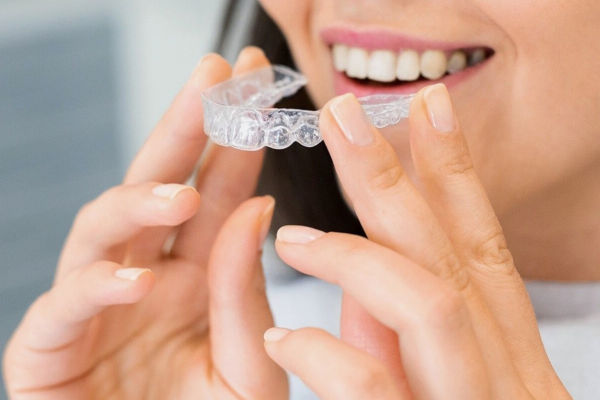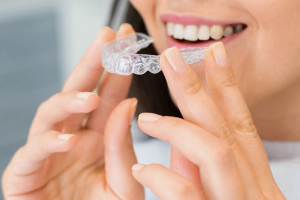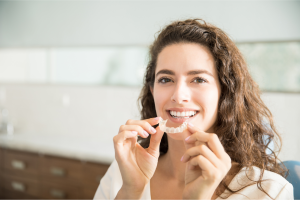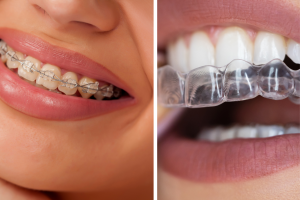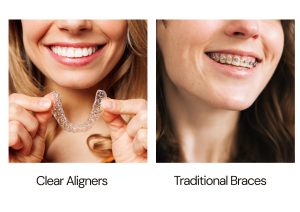If you’re weighing up clear aligner treatment against traditional fixed metal braces, the short answer is that aligners are often the better choice for adults and image-conscious teens who want discreet orthodontics, easier hygiene, and a smoother day-to-day experience—provided your case is suitable. Below, we dig into the clinical evidence, day-to-day realities, and practical considerations (including invisible braces price) so you can decide with confidence.
Clear aligners vs metal braces: what’s the real difference?
“Invisible teeth braces” is a common way people describe clear aligners—thin, custom-made plastic trays that fit snugly over your teeth and are changed every 1–2 weeks to guide movement. Metal braces, by contrast, are fixed brackets and wires attached to the teeth. In the UK, the British Orthodontic Society (BOS) notes that aligners tend to be best for mild to moderate orthodontic problems after a full clinical assessment; fixed braces remain the workhorse for complex tooth movements. You can read our blog regarding Clear Aligners vs Traditional Braces.
Aesthetics and confidence at work or school
For many adults searching invisible braces London, the priority is staying professional and camera-ready while they straighten their teeth. Aligners are practically transparent at conversational distance and come out for meals, photos, and big presentations. The NHS also recognises aligners as a private option alongside other discreet systems, reflecting their mainstream role in UK orthodontics.
Oral hygiene and gum health: aligners have the edge
Because aligners are removable, you brush and floss as normal—no threading around brackets, no plaque traps around wires. Multiple systematic reviews report that patients wearing aligners generally show better periodontal health (lower plaque and gingival inflammation) than those with fixed appliances, largely due to easier cleaning. That translates into fewer decalcification/“white spot” risks for many patients.
Comfort and day-to-day wear
Metal braces can rub cheeks and lips and often feel sore after adjustments. Evidence suggests patients with aligners experience lower pain levels, particularly in the first week of wear, and report improved oral-health-related quality of life compared with fixed braces. While every mouth is different, most adults find aligners gentler day to day.
Fewer emergencies and simpler appointments
Broken brackets and poking wires are common reasons for emergency visits with metal braces. Aligners remove that hardware from the equation. Research and expert commentary note that aligner journeys often involve shorter and less frequent in-person visits—particularly when paired with digital monitoring—though your schedule depends on your clinician and case complexity.
Treatment planning you can see
With aligners, your orthodontist plans tooth movement digitally. Many clinics show you a 3D simulation of the proposed outcome before you begin, which helps you understand goals and trade-offs. BOS guidance underscores that whichever appliance you choose, results rely on a thorough specialist assessment and clear discussion of alternatives, risks, and retention.
Are aligners as effective as metal braces?
For a wide range of mild to moderate alignment concerns—crowding, spacing, some bite refinements—aligners can be highly effective. Fixed appliances still offer unrivalled control for certain complex movements (e.g., significant rotations, vertical/tooth root changes), which is why many orthodontists recommend or combine approaches for the best outcome. In other words, aligners are “better” for many lifestyles and cases, but your clinician will confirm if they’re the best tool for invisible braces treatment in your situation.
Eating, speaking, and life on the go
You remove aligners to eat and drink anything except water, so there are no food bans—no worries about popcorn, nuts, or crunchy apples damaging wires. That freedom matters if you network over meals or have active kids. Speech typically adapts quickly, and because trays are swapped at home, your routine can be very travel-friendly—particularly handy for busy Londoners comparing invisible braces London options. Authoritative UK pages also emphasise wearing aligners 20–22 hours daily for success.
What about treatment time?
Timelines vary by case, but many aligner patients complete treatment in similar timeframes to fixed braces. Some studies and clinical reports suggest aligners can reduce chair time and unscheduled visits; still, finishing efficiently depends more on case selection, your orthodontist’s plan, and your own wear compliance than on the appliance alone.
Safety, oversight, and avoiding pitfalls
Aligners are safe when they’re prescribed, fitted, and monitored by qualified professionals. UK regulators have highlighted that while clear aligner treatment is popular for being discreet and convenient, it must be supervised properly—DIY or remote-only routes can risk poor outcomes. Choose a GDC-registered dentist or specialist orthodontist who examines you in person, takes appropriate records, and reviews you throughout.
The money question: invisible braces price and value
Prices vary based on case complexity, city, clinician expertise, and brand. In London and across the UK, you’ll see everything from light-touch cosmetic tweaks to comprehensive bite correction, each priced differently. Private aligner therapy is not usually available on the NHS for adults; most adult orthodontics (including aligners) is private, with many clinics offering staged payments or finance. The most reliable way to compare invisible braces price is to book assessments with two or three providers and ask for a written plan that sets out all fees, refinements, retainers, and aftercare.
Picking the right invisible braces provider (and avoiding buyer’s remorse)
People often Google “best clear aligners UK”, but the brand is only part of the story. Outcomes depend heavily on your clinician’s diagnosis, digital planning, and follow-through. Look for a provider who:
- examines your teeth and gums thoroughly, including X-rays or scans where appropriate
- explains whether aligners or fixed braces—or a hybrid approach—will deliver the most stable result
- includes retention (long-term retainers) in the plan, because keeping your new smile straight is as important as getting there
BOS patient resources are a good place to orient yourself before you book.
Long-term results and retention
One often overlooked aspect of orthodontic care is what happens after active treatment. Whether you choose invisible teeth braces or traditional fixed appliances, your teeth will naturally want to drift back toward their original position. With aligners, many clinics provide fixed or removable retainers as part of the package, making the transition seamless. Patients in London comparing clear aligner treatment often appreciate that retainers are discreet and comfortable, ensuring their investment in straighter teeth is protected for years to come. Including retention in your plan is essential when evaluating invisible braces price, since maintaining long-term stability is as important as achieving the perfect smile in the first place.
Where aligners may not be “better”
If you have severe crowding, complex bite discrepancies, impacted teeth, or need substantial root movement, a specialist may recommend fixed appliances, temporary anchorage devices, or a mixed approach to achieve the most precise outcome. It’s not a failure of aligners; it’s smart case selection. The right tool, used by the right clinician, produces the most predictable smile.
The bottom line
For many adults and teens, clear aligners are better than metal braces: they’re discreet, easier to keep clean, more comfortable day to day, and often involve simpler appointments—without compromising effectiveness in suitable cases. If you’re exploring invisible braces treatment, book a specialist assessment, compare invisible braces price transparently, and choose a clinician who’ll personalise your plan and supervise you throughout. That’s how you turn the promise of aligners into a healthy, confident result that lasts.
